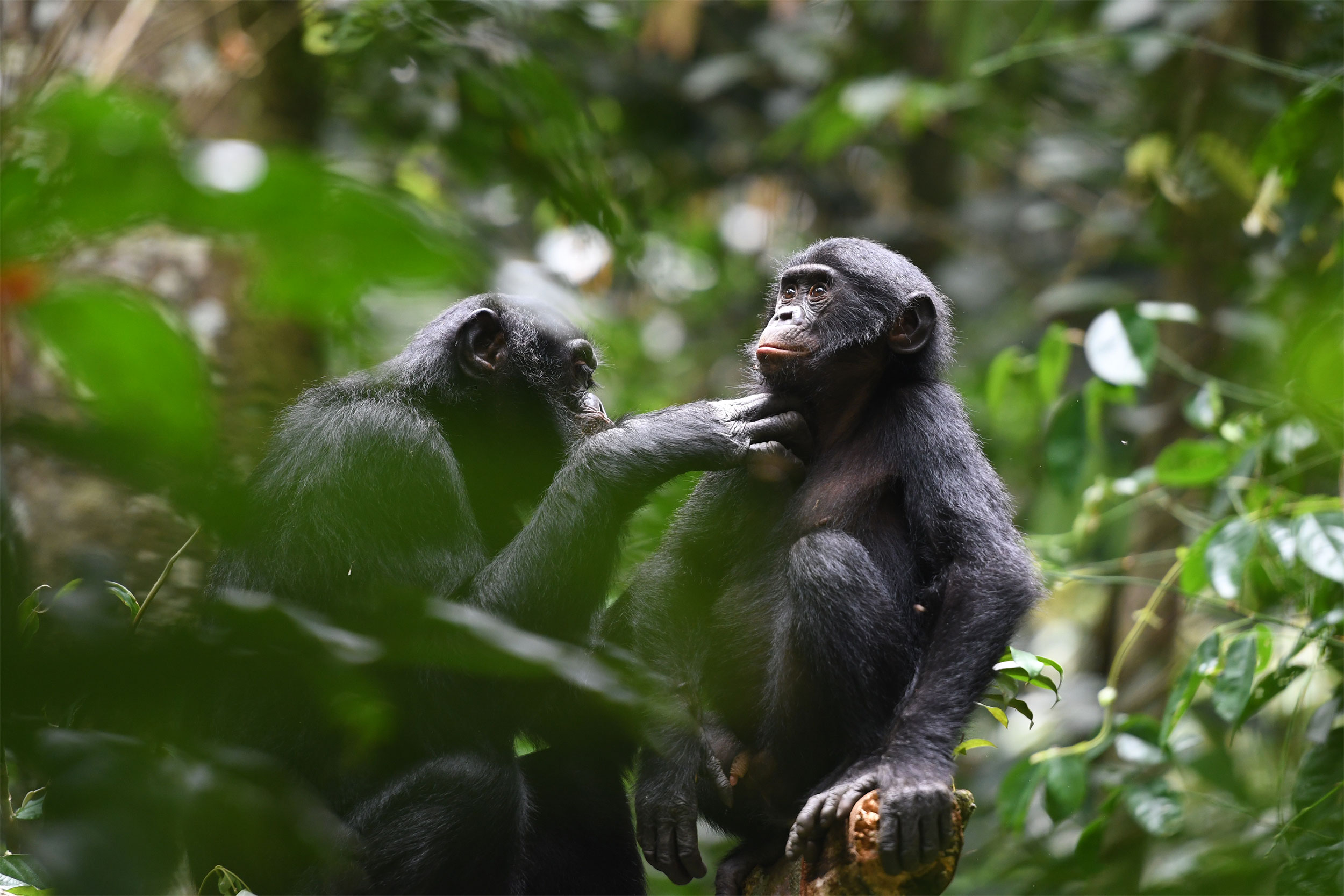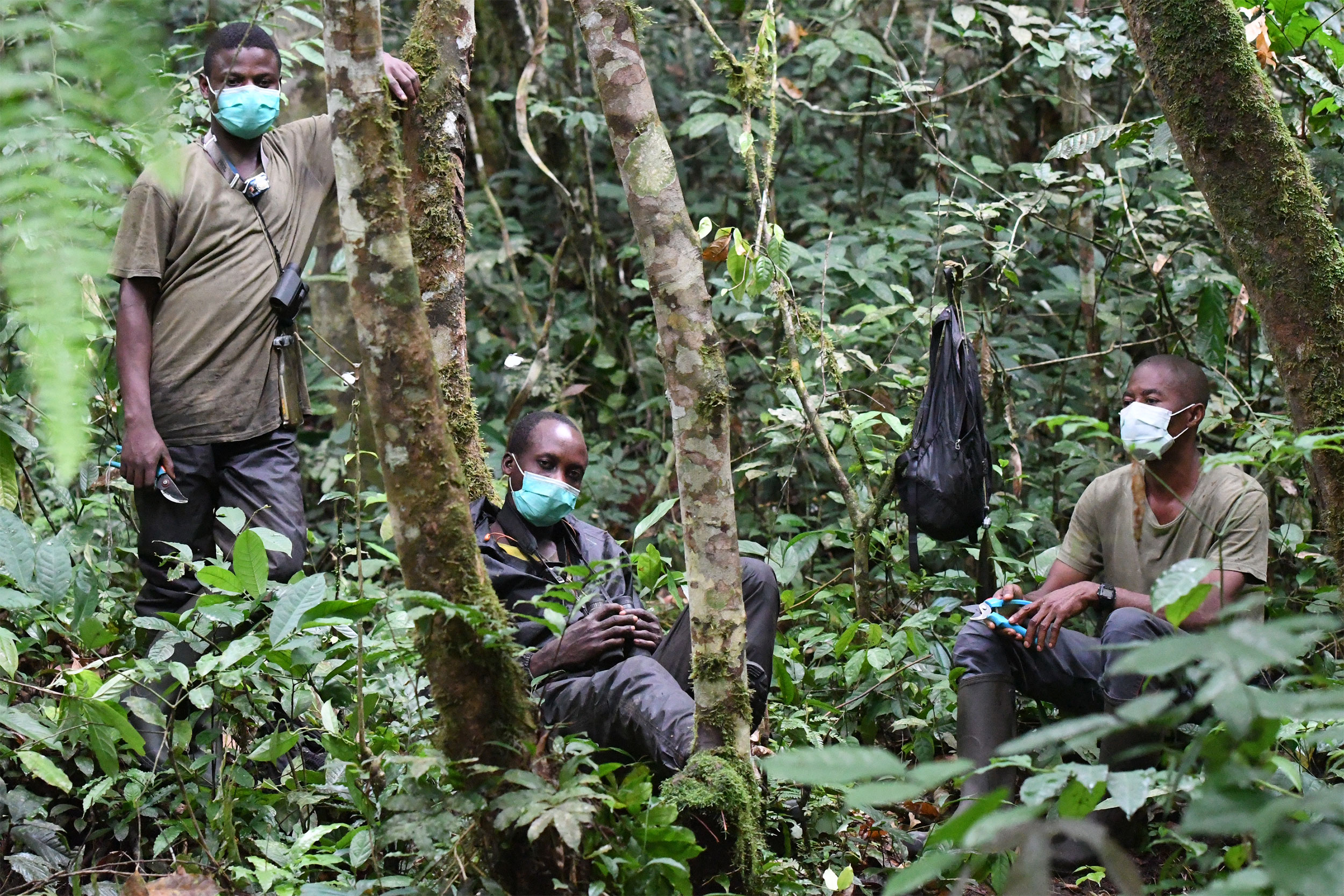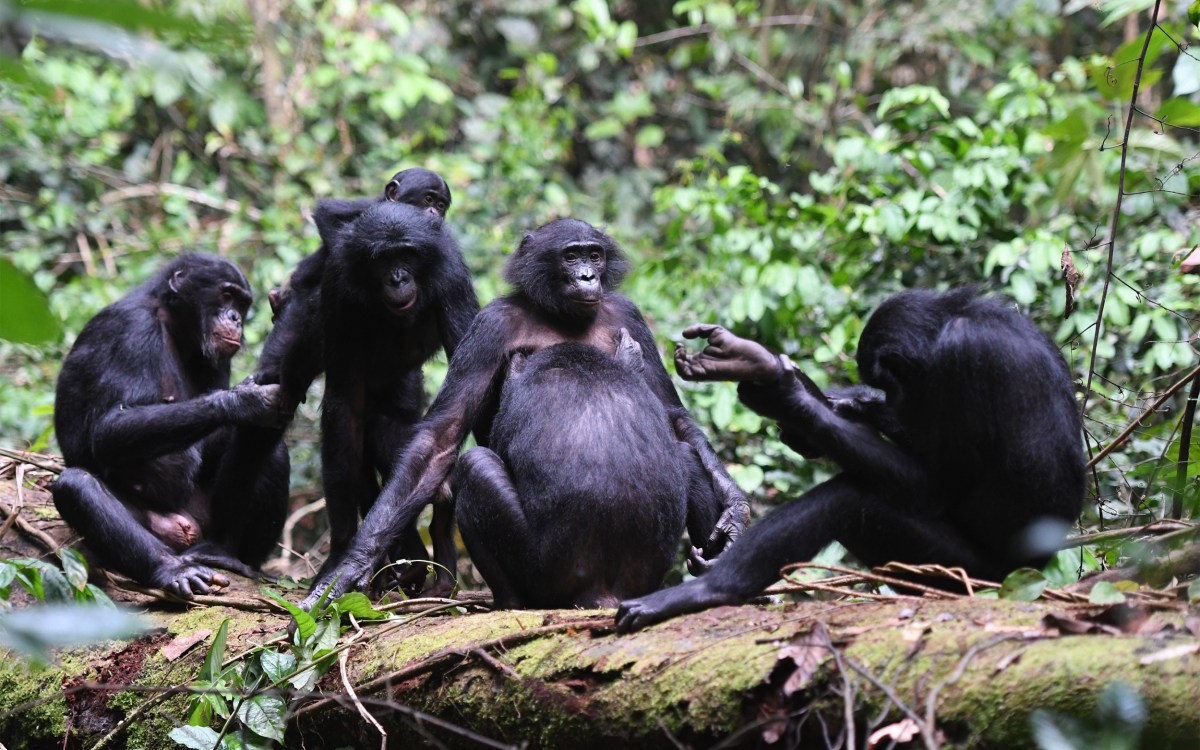
The researchers considered grooming behaviors of bonobos an indicator of out-group cooperation.
Photos by Martin Surbeck
Insight into evolution of cooperation
Bonobos, one of our closest living animal relatives, show humanlike ability to work together outside social borders in new study
Humans have been considered unique for their ability to form relationships for mutual benefit not just within immediate kin groups but across and between them, even with total strangers.
It turns out that one of our closest living relatives, bonobos, are also able to think outside the group.
These were the findings of a Harvard study that involved two years of data collection in the deep forests of the Democratic Republic of Congo, where up to 20,000 of the endangered apes make their only home. The ability to engage in such “out-group” cooperation is the foundation on which humans have created societies and cultures through trade and knowledge-sharing.
“Our work with bonobos is showing that cooperation beyond social borders, without immediate payoff between unrelated individuals, is not uniquely human,” said senior author Martin Surbeck, assistant professor in the Department of Human Evolutionary Biology, who has researched bonobos for 20 years. The study was published in Science with lead author Liran Samuni, a former Harvard research associate who works at the German Primate Center in Göttingen.
A previous study, based on the same bonobo communities, found that the primates maintained distinct, stable social borders, so called “communities.” In their latest analysis, Samuni and Surbeck found evidence of cooperation between members of different communities, facilitated by an assortment of key individuals. These certain few consistently engaged in behaviors such as grooming and food-sharing and acted as links between groups — think ape ambassadors. Within each behavior, individuals cooperated with specific counterparts who were also good cooperators in that domain.

The conclusions arose from daily observations of within- and between-group interactions of 31 adult bonobos, living in two communities called Ekalakala and Kokoalongo, all within the Kokolopori Bonobo Reserve in the Congo. Surbeck initiated the project in 2016 and, together with Samuni, has been working with Congolese partners and local villagers to collect data.
For the study, Surbeck, Samuni, and a team of local trackers focused on three cooperative behaviors: food-sharing; grooming; and forming alliances, which consists of joint action against a common opponent.
They found that certain individuals exhibited these acts outside their social bounds with others who would be likely to return the favors. Although bonobos are known for being a peaceful species, compared with their more warring chimpanzee cousins, the researchers found that the bonobos were not random in their benevolence.
“They’re not similarly nice to everybody,” Samuni said, noting they formed preferences for some and not others.
“The extreme tolerance we observed between members of different bonobo groups paves the way for pro-social cooperative behaviors between them, a stark contrast to their sister species, the chimpanzees,” she added.
Humans and bonobos share 99 percent of their DNA. Observing the animals in their natural environment can offer a window into our evolutionary past, the researchers say. Work at the preserve takes years of remote coexistence with the bonobos; habituation of the animals to a human presence has been key to making the studies successful, Surbeck said.
Surbeck’s team works closely with local partners, including the conservation organization Vie Sauvage, the Congolese Conservation authorities (ICCN), and the Bonobo Conservation Initiative, to gain support and permission to work in the country and on the community reserve.
“Long-term research sites don’t always quite get the recognition they deserve, in terms of what they contribute to both basic data collection and serving as a platform for other scientists, as well as for the conservation of the species,” Surbeck said.
Bonobos are a critically endangered species, with only a few thousand left in the wild, yet they represent a key comparative model to human social systems, “a rare opportunity to reconstruct the ancestral conditions of human large-scale cooperation,” according to the paper.






